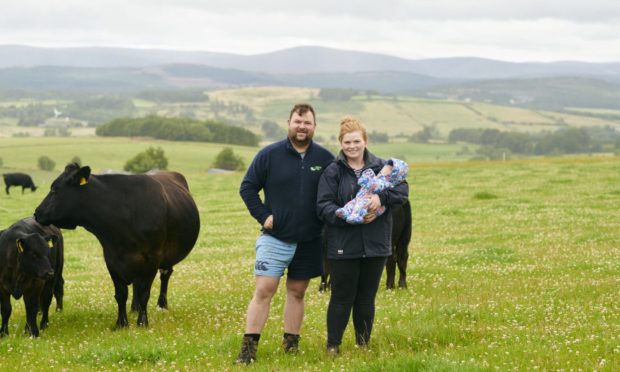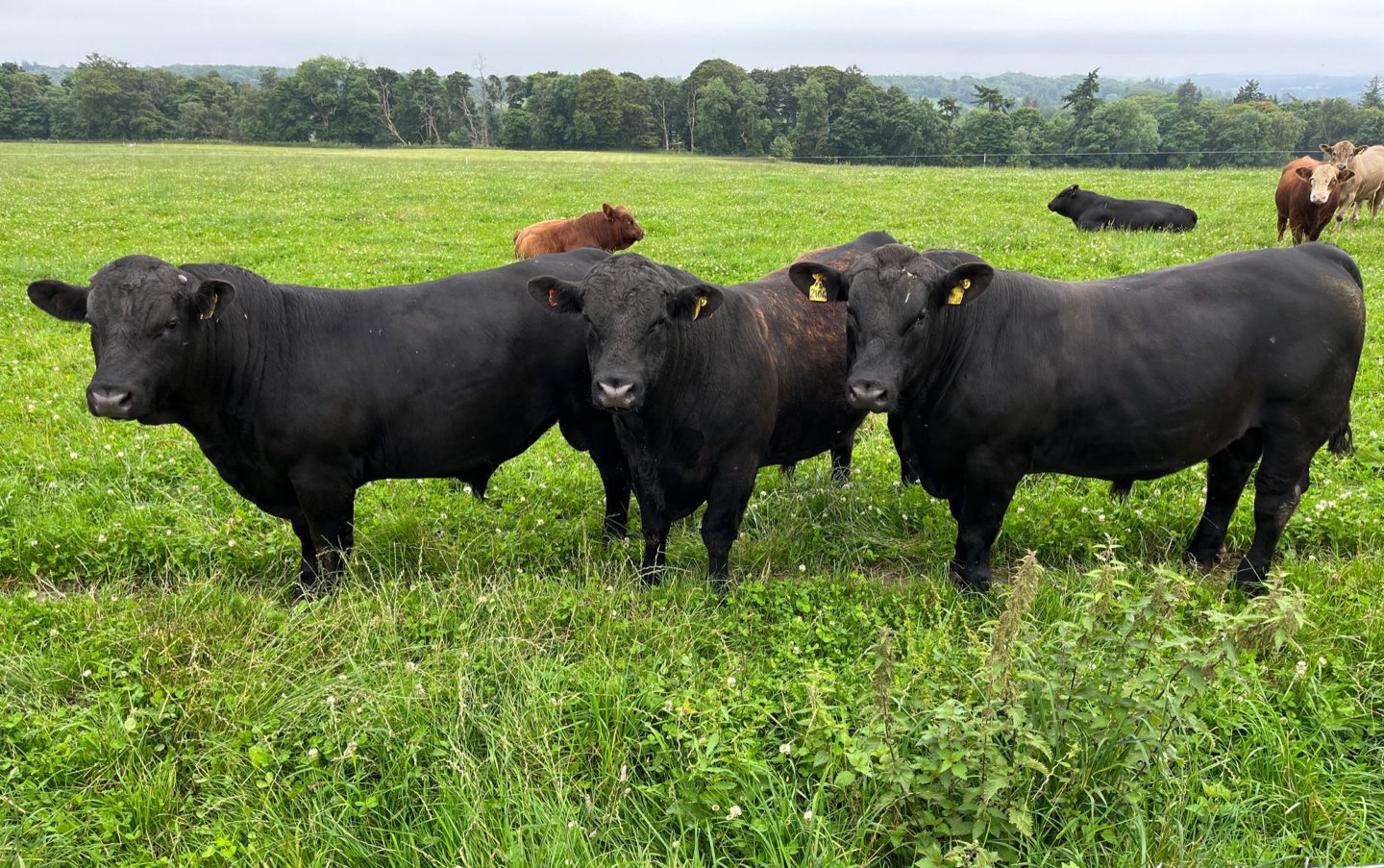Beef farmers from across Scotland gathered at a Monitor Farm in Aberdeenshire to learn about a groundbreaking new trial.
Duncan and Claire Morrison are finishing their mainly Stabiliser beef bulls at grass as part of the project.
Last year’s high feed prices prompted them to consider if there was perhaps a more cost-effective option than intensive finishing indoors.
Visitors were keen to learn more during a Monitor Farm summer open meeting at their cattle operation at Upper Ingliston, near Inverurie.
Good weights achieved
Duncan told The Press and Journal: “We got the idea from our experience with our breeding bulls, which we bring to sale off grass.
“They do really well, and the few which don’t make breeding spec have finished at a good weight and before the 16-month deadline.”
Key to the system is rotational paddock grazing on high quality grass .
Swards the animals feed on are mainly ryegrass, with red and white clover and a small amount of plantain and chicory.
We got the idea from our experience with our breeding bulls, which we bring to sale off grass.” Duncan Morrison
Bulls were split into two groups at turnout in April – those of more than 350kg (about 772lbs) and beasts weighing less than that. They move paddocks every two days or so.
Duncan said: “We started feeding a little concentrate in February, about 1kg (2.2lbs) per head, and have continued this in the field using an all-terrain (vehicle) and snacker.
“We’re just moving from feeding a roll to introducing some barley as the higher starch will help them finish.”
Average daily liveweight gain at grass has exceeded 2kg (4.4lbs) a day for most of the bulls.
Kirsten Williams is a senior sheep and beef expert with SAC Consulting.
She costed the system using fair assumptions.
While output per head may be slightly less, due to potentially lower finishing weights, variable costs are expected to fall from £712/head to £387.
Trial delivering bigger profits
This gives a speculative gross margin of £466 per head for finishing these bulls at grass.
By contrast, last year’s per head margin, with bulls finished intensively indoors, came in at £214.
The Morrisons’ trial shows there is a £252 per head gain at grass.
However, the couple are keen to wait until the bulls have been finished and slaughtered before coming to a final conclusion.
We are not finished yet and will need to see how they grade.”
Duncan is a keen user of Farmax grazing software, using it to plan grazing rotations, as well as being able to assess different scenarios.
Its use helped give confidence there was enough quality pasture to finish bulls at grass.
“I am really pleased with how this project has gone,” Duncan said: “The weight gain so far has been very good, so I am cautiously optimistic.
“I would caveat this by adding we are not finished yet and will need to see how they grade.”
Trial is Scottish Government-funded
The Monitor Farm Scotland initiative is managed by Quality Meat Scotland, with support from the Agriculture and Horticulture Development Board and funding from the Scottish Government.
It is hoped it will help improve the productivity, profitability and sustainability of Scottish farm businesses.
Big turnout for summer open meeting ‘great to see’
Monitor Farm regional adviser Peter Beattie said: “It was great to see almost 100 farmers from across Scotland come to hear about Duncan and Claire’s bull beef project and its impact on costs.
“Our other speakers all fed into this focus on making the most of forage and the ability to make greater use of it for finishing.”


Conversation